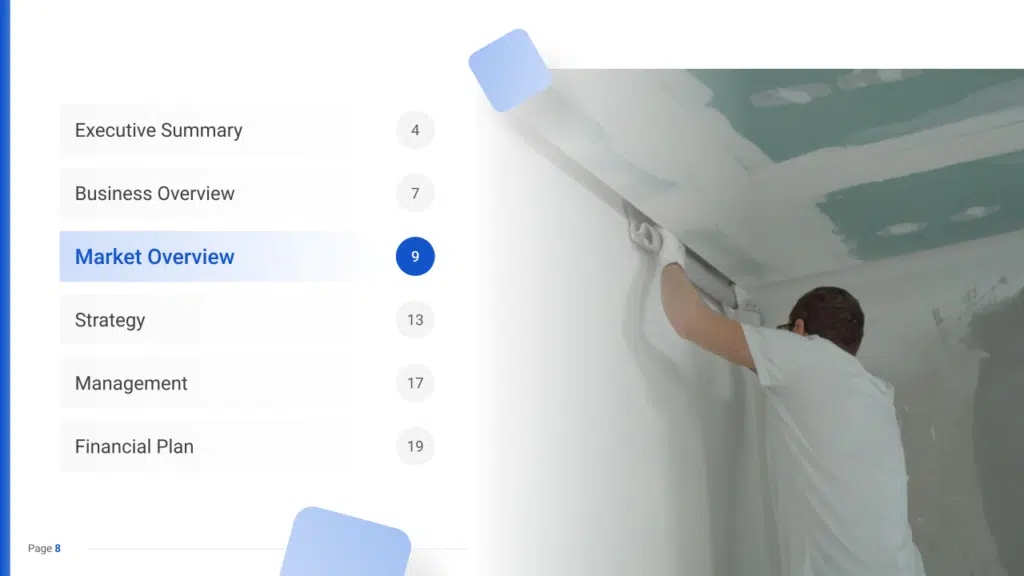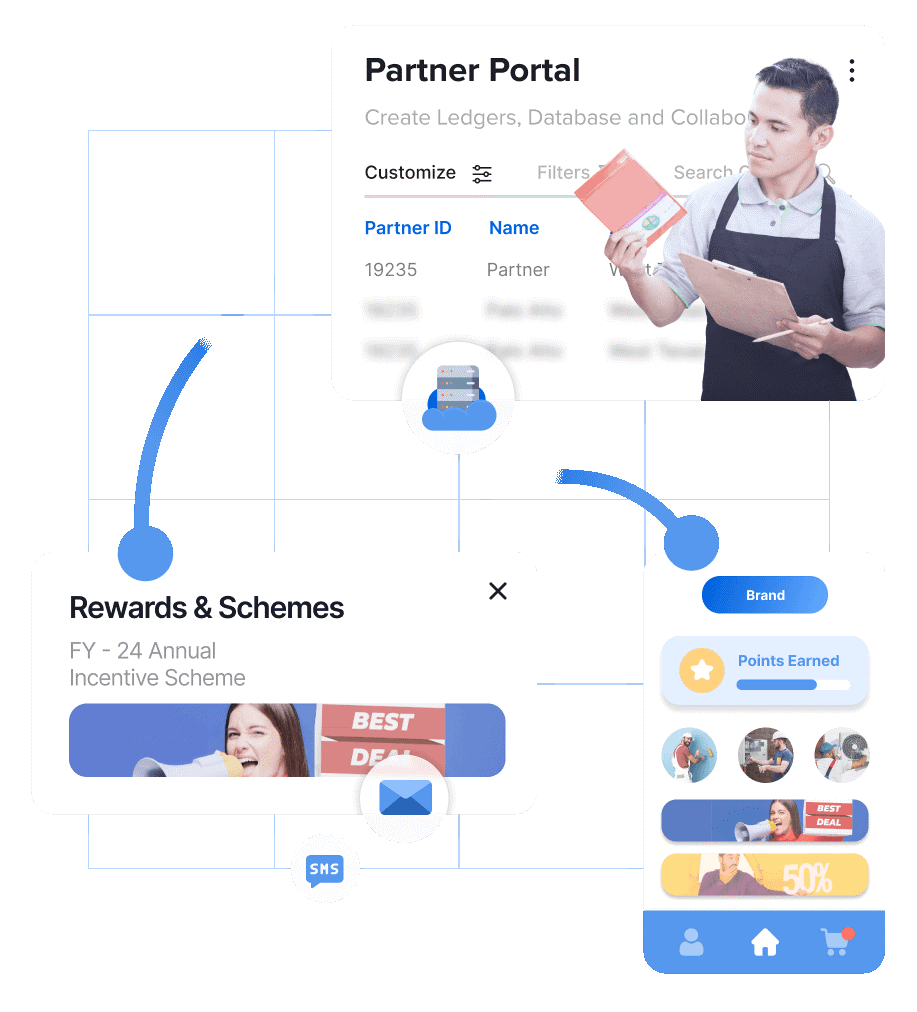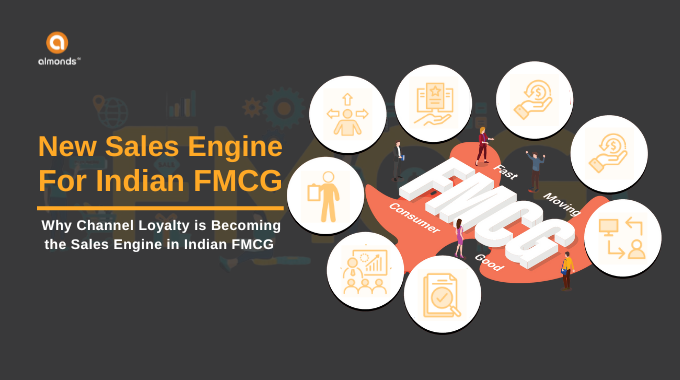Loyalty programs have become indispensable for businesses across various industries, with the goal of enhancing customer retention and driving long-term revenue. In industries like paints, implementing a targeted painter loyalty program can greatly benefit companies by fostering stronger relationships with painters, who serve as key influencers in product choices. When done right, a painter loyalty program not only helps generate more revenue but also builds brand advocates who contribute to long-term growth. Let’s explore how you can design an effective program that maximizes revenue and loyalty.
What is a Painter Loyalty Program?

A painter loyalty program is a structured rewards initiative designed to incentivize painters for purchasing products, recommending them to customers, attending training sessions, and promoting brand loyalty. Painters, often the frontline influencers in determining which products are used in residential and commercial painting projects, can be rewarded with points, bonuses, tools, discounts, and other perks for their ongoing engagement with a particular brand.
By tailoring a loyalty program specifically for painters, businesses can encourage repeat purchases, increase product recommendations, and ensure that painters are well-versed in their product offerings. The objective of these programs is to create a symbiotic relationship where both the painter and the business benefit from each other’s success.
Why Should Businesses Launch a Painter Loyalty Program?

The importance of launching a painter loyalty program cannot be overstated. Painters, though sometimes overlooked, play a crucial role in driving sales for paint and related products. They are trusted by customers to recommend the best products for specific jobs, and their preferences can strongly influence purchasing decisions. Launching a painter loyalty program offers multiple benefits:
- Increased Customer Retention: Retaining painters as loyal customers reduces the cost of acquiring new clients. Research from HubSpot shows that increasing customer retention rates by just 5% can increase profits by up to 95%. Loyalty programs keep painters engaged, ensuring they continue to choose your brand over competitors.
- Boost in Sales: A painter loyalty program encourages repeat purchases by offering incentives for frequent buying. Painters who are rewarded for purchasing your products will be more inclined to stick to your brand. According to Statista, loyalty program members tend to spend 12-18% more on products than non-members, translating into increased sales for your business.
- Enhanced Brand Advocacy: Painters often act as influencers in the decision-making process of homeowners and commercial clients. When painters are rewarded for using and recommending your products, they are more likely to advocate for your brand, leading to higher visibility and an increase in sales.
- Product Familiarity and Training: Painters benefit from staying updated on the latest products and techniques. A loyalty program that includes product education, webinars, or workshops provides painters with knowledge they can use in their projects. When painters understand and trust your products, they are more likely to recommend them to their clients, boosting sales.
- Building Long-Term Relationships: A loyalty program fosters a relationship built on mutual benefits. By rewarding painters, you demonstrate that their loyalty is appreciated, leading to a sense of trust and commitment. This, in turn, results in long-term partnerships and steady revenue growth.
Addressing Key Painter Challenges
Painters, as a segment, face distinct challenges in their work that can hinder loyalty if not addressed. These challenges often include irregular training, limited knowledge of new products, and inconsistent recognition for their contributions. A well-structured painter loyalty program is designed to tackle these issues by offering meaningful incentives and rewards that resonate with their daily work.
For example, many painters lack access to up-to-date product information or the opportunity to stay current with industry trends. By incorporating training modules or workshops into your loyalty program, you can empower painters to expand their expertise, while rewarding them for their participation. Painters who are confident in their knowledge of your products are more likely to recommend them to customers, which directly translates into higher sales.
Additionally, rewarding painters for their long-term loyalty by offering tools, exclusive discounts, and even personal rewards such as vouchers can significantly improve retention and advocacy. Painters who feel appreciated will continue to support your brand, contributing to your overall revenue growth.
The Power of Rewards and Recognition
Loyalty programs are driven by the psychology of rewards. Painters who are offered incentives—whether in the form of discounts, free tools, or recognition—are more likely to remain engaged and loyal to your brand. Rewarding painters for every purchase or successful referral encourages them to keep coming back to your products, which in turn leads to sustained sales.
HubSpot data reveals that 69% of customers are influenced by the availability of loyalty programs when choosing which brands to engage with. By offering rewards that address the specific needs of painters, you can build an emotional connection with your brand. A study by Forbes further supports this by showing that loyalty program members tend to buy 90% more frequently than non-members.
To keep the momentum going, it’s essential to implement a tiered rewards system. For example, painters who reach certain milestones (e.g., 100 paint cans purchased or 10 successful referrals) can receive exclusive perks, such as premium tools or even professional development opportunities. This kind of recognition motivates painters to push for higher rewards while consistently choosing your brand.
Read More: Engaging Painters: The Art of Building Lasting Partnerships in the Paint Industry
Use Cases of Painter Loyalty Programs in Action
While many businesses recognize the value of loyalty programs, the real challenge lies in how they are applied effectively. In the case of painters, offering tiered rewards for purchases, referrals, and continuous engagement can lead to a dramatic increase in sales and brand advocacy.
Imagine a loyalty program where painters earn points for every product purchase. Those points could be redeemed for essential tools, discounts on future purchases, or access to exclusive training sessions. Not only does this structure drive repeat purchases, but it also builds a community of knowledgeable painters who are invested in your brand’s success.
Another approach is to offer extra incentives for recommending your products to other customers. Painters, especially those working in residential and commercial projects, hold significant influence over which brands are chosen for large-scale jobs. Rewarding them for these recommendations strengthens their relationship with your brand, turning them into brand ambassadors who actively contribute to your growth.
Leveraging Data to Maximize Program Success
The ability to track painter behavior and preferences is a critical aspect of any successful painter loyalty program. By collecting data on product preferences, purchasing patterns, and reward redemption rates, businesses can fine-tune their loyalty programs for maximum effectiveness. Data allows for the personalization of rewards, ensuring that painters are offered incentives that are most meaningful to them.
For example, if data shows that a particular group of painters tends to purchase more of a specific type of product, offering personalized rewards such as discounts on related items can further encourage larger purchases. According to HubSpot, personalized offers increase loyalty program participation by 20%, directly impacting both engagement and revenue.
A loyalty program can also use this data to identify underperforming areas. If certain painters are not fully utilizing the program, businesses can offer targeted promotions to re-engage them, ensuring a steady flow of revenue from this essential group.
Conclusion
A well-implemented painter loyalty program offers tremendous potential for driving long-term revenue growth. By addressing painters’ challenges , offering meaningful rewards, and leveraging data to personalize incentives in loyalty painting, businesses can create a program that fosters loyalty, increases sales, and builds brand advocacy.
The key lies in recognizing painters as valuable influencers and providing them with the tools, recognition, and incentives they need to stay loyal. In return, they become advocates for your brand, driving consistent revenue growth and establishing a competitive advantage in the market.
Frequently Asked Questions
Painters loyalty program is a preferred loyalty program for businesses. Here is some of the frequently asked questions about painter loyalty programs.
Q1: What is a painter’s loyalty program, and why is it essential?
A painter’s loyalty program is a targeted initiative to engage and reward painters for using specific brands or products. It’s essential as it fosters brand loyalty, incentivizes repeat purchases, and builds lasting relationships with painters in the painting and coatings industry.
Q2: How can a painter’s loyalty program increase revenue for paint brands?
Loyalty painting programs drive revenue by encouraging repeat purchases. When painters are rewarded for their loyalty, they’re more likely to choose a particular brand over others, leading to consistent sales and increased market share.
Q3: What are effective rewards for a painter’s loyalty program?
Effective rewards include cash incentives, product discounts, redeemable points for tools or accessories, training sessions, and even certifications. Tailoring rewards to painters’ needs can make the loyalty program more appealing and valuable.
Q4: How do I get painters to participate in a loyalty painting program?
To encourage participation, offer easy enrollment, provide clear program benefits, and promote it through painting distributors or direct channels. Painters often respond well to programs that are accessible and immediately rewarding.
Q5: Can a painter’s loyalty program include digital elements?
Yes, digital solutions like mobile apps or web portals can enhance the painter’s loyalty experience. Painters can track rewards, earn points, access product information, and receive exclusive offers through digital platforms, making the loyalty painting program more engaging.
Q6: How does educating painters improve loyalty?
Educating painters about product benefits, application techniques, and new technologies helps build trust and expertise. When painters feel confident and informed, they’re more likely to stay loyal to the brand that provides ongoing knowledge.
Q7: What are common challenges in implementing a painter’s loyalty program?
Challenges include getting painters to register, maintaining engagement, and managing reward fulfillment. Ensuring an easy, transparent system with consistent incentives helps address these challenges in loyalty painting programs.
Q8: How do I measure the success of a painter’s loyalty program?
Track metrics like painter participation rates, repeat purchase frequency, program engagement levels, and revenue growth. These metrics indicate how effectively the loyalty painting program drives retention and revenue.
Q9: What role does gamification play in painter loyalty?
Gamification adds an element of fun and engagement to loyalty programs, encouraging painters to complete certain activities for additional rewards. Tasks like completing training modules, using specific products, or reaching spending milestones can increase loyalty and program activity.
Q10: Can small paint businesses benefit from a painter’s loyalty program?
Yes, small paint businesses can build customer loyalty and drive revenue through a loyalty painting program tailored to their resources. Starting with simple incentives like discounts or exclusive access can foster loyalty even on a smaller scale.
Q11: How do painter loyalty programs differ from other channel loyalty programs?
Painter loyalty programs are specifically tailored to the painting profession, focusing on rewards and incentives that align with painters’ needs, such as tools, training, and product knowledge. This focus makes them more relevant and effective for the painting community.
Q12: What are some key components for launching a successful loyalty painting program?
Key components include an easy registration process, accessible rewards, digital tracking, personalized offers, and ongoing communication to keep painters engaged. Aligning the program with painters’ daily needs is crucial for long-term success.







